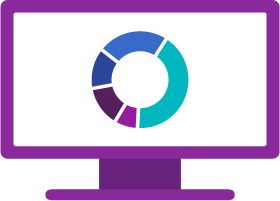Conference Themes
Changes in Audience Behavior
CHALLENGES CONTROLLING CONSUMER DATA, PRIVACY, AND POLARIZATION
Transformation in consumer behavior continues to pose challenges for brands and their marketing measurement. There is more regulation in place now that restricts behavioral targeting, but do consumers notice it? If they see a well-targeted ad, do they assume it is from behavioral targeting, even if it is just contextual? Are consumers actually demanding more control over their data and privacy regulation? How can new and existing methods help marketers adapt to changes in consumer behavior? Research is invited that examines these challenges and answers key questions, including but not limited to:
- Do changes in consumer behavior open new opportunities for advertising – e.g., in gaming, metaverse, retail, ad avoidance, and tradeoffs between costly subscriptions and Free Ad-Supported Streaming TV (FAST)? Are viewers moving from ad free tiers to ad supported ones, how fast are subs churning, and in what direction?
- A recent challenge that is especially difficult for brands to navigate is political polarization and its invasion into advertising. For instance, there have been significant boycotts in response to “woke” ad campaigns. Will the current political environment and schedule of the upcoming primaries and trial influence networks and viewing habits?

The New State of Video Measurement
NEW INSIGHTS INTO TV MEASUREMENT
The proliferation of TV data sources, including new metering solutions, along with existing sources such as, set-top boxes, OTT data, ACR solutions, and panels, are transforming measurement and stimulating innovation across the marketplace. However, data from these sources bring their own challenges in terms of bias, error, fragmentation, normalization, personification, and de-duplication. How are providers overcoming these challenges to deliver improved measurement solutions for video content and advertising? Research is invited to showcase the latest innovations and solutions for the challenges of TV audience measurement., including but not limited to:
- What role do panels play in the future of TV audience measurement? What is the role for privacy-enhancing techniques (PETS), virtual ID’s (VIDS) and other identity resolution solutions? How are linear TV and CTV audiences being integrated in planning and buying? Is anyone measuring the biases of the above stated sources and does using multiple sources address the biases?
- How does the state of video measurement impact the state of media currencies? What organizations are actually using multiple currencies and how do they differ? How do we better understand the crucial difference between measurement and currency? Are agencies and their clients ready for multiple currencies and how should they handle situations where different suppliers have varying numbers? (Case studies encouraged).
- Video streaming services have greatly expanded their tiers to include multiple levels of ad exposure, including ad-free SVOD. How will the digital data these can provide be integrated, planned, measured and bought.
![]()
AI and New Ad Formats
FUTURE AND PRESENT IMPACT ON AUDIENCE MEASUREMENT
In today’s complex advertising landscape, countless questions surround Artificial Intelligence and the multiple roles it plays in creative, measurement, and future influence on the industry. New (or “new-ish”) ad formats are also expanding as audiences interact with evolving tech such as video games, podcasts, voice-assistants, and the metaverse. Influencers also are affecting consumer behavior. Research is invited on experiences in these formats, including but not limited to:
- Do these formats require new measurement approaches? How do our existing tools adjust to audience behaviors that are specific to these new environments and formats?
- Demand is growing for more direct connection between consumers and brands –– how do audiences respond to influencer vs. conventional advertising?
- How is AI used in content creation and scheduling? What about targeting, content optimization and insight generation? What are best practices to use AI in research/measurement? How can we use it along with existing technologies? Will AI create new black box solutions that defy traditional quality audits? How can AI increase efficiency and impact, reduce costs, enhance consumer choice and experience? Will it open audience measurement to higher levels of fraud and manipulation? What new safeguards are companies introducing to realize the benefits of AI and limit the liabilities? Success stories and use cases are encouraged.

Impression Quality
ARE ALL IMPRESSIONS EQUAL? IF NOT, HOW DO WE MEASURE QUALITY?
New cross-media measurement initiatives are looking to provide advertisers with a better understanding of reach and frequency across different pools of inventory. But some industry participants argue that equivalizing all impressions is a mistake, suggesting that content quality and context are critically important. Research is invited on the following themes but not limited to:
- What metrics should we value most in measuring impression quality? Why? Can quality be objectively measured? Does high quality content really drive superior outcomes and better ROI or are all impressions effectively equal? What tools are available to effectively measure attention (and in-attention)? Which are superior? You are invited to share more on the validity, reliability, and predictive power of attention. How can different types of companies benefit from understanding impression quality measures (Advertiser vs. Publisher?)

Audience Diversity
HOW DOES AUDIENCE DIVERSITY AFFECT TOTAL AUDIENCE MEASUREMENT?
How do you appeal to audiences in a culturally diverse but polarized population? Research is invited on insights about the changing composition and texture of target audiences and methods to assure unbiased estimates and inclusion of all segments. Consider these questions, but additional work on this topic will be accepted:
- How do you avoid alienating “general market” audiences for ads that have been designed with diverse audiences in mind? How do we leverage culturally relevant insights into cross-platform measurement or other existing methods? How does audience diversity make measurement harder, especially with growing media fragmentation? Can big data and panels provide an objective landscape? How does bias in big data impact audience driven program and content decisions?
![]()
Traditional Media — New Developments
UPDATES ON FORMATS OUTSIDE OF VIDEO MEASUREMENT
Can we still effectively engage consumers without video advertising? How do we measure this impact? How do radio, print and out-of-home ads work best in a video-saturated environment? Research is invited on updates of any ad formats outside of video, such as radio, print, and out of home. How do these formats and their measurement methods correlate with video measurement, if at all? Case studies are encouraged.
Membership questions click here
Sponsorship questions click here


